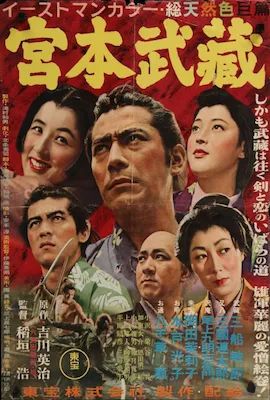Inagaki Hiroshi
Overview
稲垣浩
30 Dec 1905
Inagaki Kôjirô
稲垣浩二郎
Tokyo, Japan
21 May 1980 (74)
Cirrhosis
Kahijara Kinpachi
梶原金八
Azuma Akihiro
東明浩
Began touring with his father's acting company after age 8 when his mother died.
Joined Nikkatsu at age 17, became a third assistant director at age 21.
Collaborated frequently with actor Kataoka Chiezo in the 20s, 30s and 40s. He also directed several features for Kataoka's production company during the same time.
Filmed a trilogy of Musashi Miyamoto films in the 40s with Kataoka. The films are considered lost now, and have since been superseded by Inagaki's second trilogy on the same subject starring Mifune Toshirô.
Directed The Three Treasures (1959) to commemorate Toho's 1000th feature film.
Selected Works






1962
Chushingura
Director
